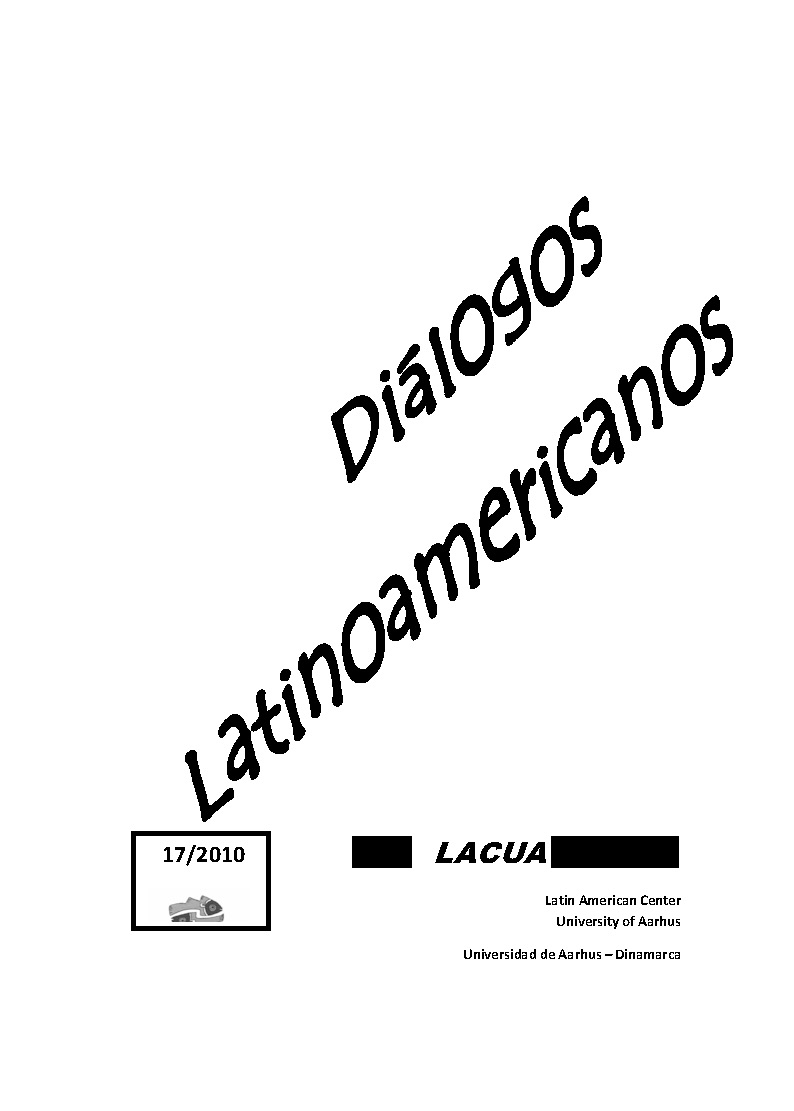Desarrollo turístico en comunidades norteamericanas en México
el caso de álamos, sonora
DOI:
https://doi.org/10.7146/dl.v11i17.113569Keywords:
North American Immigration, Mexico, tourism, experience economyAbstract
The article analyses how a group of North American immigrants in a Mexican
city close to the Mexican/US border influences the development of tourism in
the region. We propose a new concept intimate experience economy to show
how the North American group creates a type of tourism as a form of social
activity that permits the tourists to be part of and in contact with scenes,
spaces and landscapes far away from their own every day experiences. The
article concludes that this way the immigrant group creates the possibility to
emphasize certain aspects of the Mexican culture as they believe characterize
México.
References
Mercedes, (2003) “Cultura, políticas de desarrollo y turismo rural en
el ámbito de la globalización”, Horizontes Antropológicos, Número
20, Año 9, Porto Alegre, Brasil, (octubre), pp., 161-183.
Allcock J. B. (1995) “International tourism and the appropriation of history in
the Balkans”, en M. F. Lanfant et al (eds.), International Tourism:
Identity and Change, London: Sage, pp: 100-112.
Barth Fredrik (1969) Ethnic Groups and Boundaries. The Social
Organization of Culture Difference. Boston, Little Brown and
Company.
Bianchi Raoul V (2003) “Place and Power in tourism development: tracing
the complex articulations of community and locality” en Pasos. Revista
de Turismo y Patromonio Cultural, España, Vol. 1, No. 1, pp. 13-32.
Boletín Hechos y Tendencias del Turismo, (2010), Secretaría de Turismo,
México, Número 87, enero- febrero, 2010.
Bruner E M (1995) “Massai on the Lawn: tourist realism in East Africa”, en
Cultural Anthropology Vol. 9, No. 4, pp 435- 470.
Casella, Ronnie (1999) “Pedagogy as View Sequence: Popular Culture,
Education, and Travel” Anthropology and Education Quarterly vol. 30
No. 2 pp: 187-209.
Clausen Balslev, Helene (2009) “La utopía de los estadounidenses en un
pueblo mexicano. Un estudio sobre la construcción de una comunidad
imaginaria”, en Helene Balslev Clausen, Jan Gustafsson, Mario
Velázquez, Utopía y globalización, El Colegio de Sonora, Hermosillo
Clausen Balslev, Helene (2008) “Negotiating Membership in a Mexican
Transnational Community. A study of North American Immigrants in a
Mexican Border Town” Diálogos Latinoamericanos, vol.14, Aarhus,
pp.1-19
Craik Jennifer (1997) “The Culture of Tourism”, C. Rojek and J. Urry (eds),
Touring Cultures: Transformation of Travel and Theoryk Routlegade,
London, England, pp. 113-136.
Criado, Enrique Martín. (2000) Habitus. Diccionario crítico de ciencias
sociales, Universidad Complutense de Madrid.
Glick Schiller Nina; Basch Linda; Szanton Blanc Cristina (1992) “Towards a
Transnational Perspective on Migration: Race, Class, Ethnicity, and
Nationalism Reconsidered”, en Annals of the New York Academy of
Sciences, 645, pp 1-24.
Glick Schiller Nina; Basch Linda; Szanton Blanc Cristina (1994) “Nations
Unbound: Transnational Projects, Post-Colonial Predicaments and
De-Territorial Nation-States”, Langhorne, PA, Gordon & Breach
Goffman Erving, (1997 [1959]), La presentación de la persona en la vida
cotidiana, Amorrortu editores, Buenos Aires, Argentina.
Grabum, Nelson H, (1983) “The Anthropology of Tourism”. Annals of
Tourism Research Vol. 10, No. 9, pp. 9-33.
Greenwood, David (1989) “Culture by the Pound: An Anthropological
Perspective on Tourism as Cultural Commodization”. In Hosts and
Guests, the Anthropology of Tourism, University of Pennsylvania Press
Philadelphia, pp: 171- 185
INEGI, Cuenta Satélite sobre Turismo de México durante el 2001,
Aguascalientes, México (2003) encontrado en:
(http://www.inegi.gob.mx/inegi/contenidos/espanol/prensa/Boletines/B
oletin/Comunicados/Especiales/2003/Abril/cp_41.pdf) el 19 de enero
del 2009.
Jacobs Claude, (2001) “Folk for Whom? Tourist Guidebooks, Local Color,
and the Spiritual Churches of New Orleans”, The Journal of American
Folklore, Vol 114, No. 453 (Summer), pp. 309-330.
MacCannell, Dean, (1973) “Staged Authenticity: Arrangements of Social
Space in Tourist Setting”, The American Journal of Sociology, Vol. 79,
No. 3 (nov.), pp. 589-603.
Mantecón, Alejandro (2008) La experiencia del turismo, Icaria, España.
Nash, Dennison, (1981) “Tourism as an Anthropological Subject”, Current
Anthropology, Vol. 22, No. 5, pp. 461-481.
Oakes Tim, (2000) “China´s Provincial Identities: Reviving Regionalism and
Reinventing Chineseness” The Journal of Asian Studies, Vol. 59, No. 3
(Agust), pp. 667- 692.
Pine, J. and Gilmore, J. (1999) The Experience Economy, Harvard Business
School Press, Boston.
Pueblos Mágicos, Alamos, encontrado el 8 de junio de 2009 en:
http://www.pueblomagicodemexico.com.mx
Secretaría de Turismo (Sectur), ¿Qué es un pueblo Mágico?, Gobierno
Federal Mexicano, (2001a) encontrado el 8 de junio de 2009 en:
http://www.sectur.gob.mx/work/sites/sectur/resources/LocalContent/13
114/3/DefPueMag.pdf
Secretaría de Turismo (Sectur), Criterios de Incorporación al Programa,
Gobierno Federal Mexicano (2001b), encontrado el 8 de junio de 2009
en:
http://www.sectur.gob.mx/work/sites/sectur/resources/LocalContent/13
114/3/CriIncProg.pdf
Secretaría de Turismo (Sectur), “Recursos otorgados a los pueblos mágicos a
través de los convenios de coordinación y reasignación de recursos
2001-2006”, Gobierno Federal Mexicano, (2007), encontrado el 8 de
junio de 2009 en:
http://www.sectur.gob.mx/work/sites/sectur/resources/LocalContent/13
114/3/RecPueMag.pdf
Salamon Lester; Anheier Helmut (1998) “Social Origins of Civil Society:
Explaining the Nonprofit Sector Cross-Nationally” International
Journal of Voluntary and Nonprofit Organizations, vol. 8, no. 3, pp.
213-248
Urry, J (1990) The Tourist Gaze London: Sage
Downloads
Published
How to Cite
Issue
Section
License
Counting from volume 31 (2022), articles published in Diálogos Latinoamericanos are licensed under CC-BY 4.0. Read more about the license terms here https://creativecommons.org/licenses/by/4.0/.
No Creative Commons license applied on volumes 1-30. All rights reserved by the authors. Readers may download, read, and link to the articles, but they cannot republish the articles.
With the publication of volume 31 (2022), authors retain the full copyright to their articles and give Diálogos Latinoamericanos the right to the first publication. Authors also retain copyright to earlier versions of manuscripts, such as the submitted (pre-print) and the accepted manuscript (post-print).
Copyright to articles published in volumes 1-30 is held by the authors.





